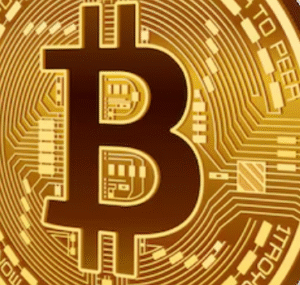$BTC $ETH #Bitcoin #CryptoNews #Investment #FinancialFreedom #MarketTrends #BullMarket #Economy #Cryptocurrency #Ethereum #WealthBuilding
How Did Bitcoin Surge Past $125K? Uncover the Secrets to Its Record High!
In today’s morning news, the cryptocurrency market is abuzz with Bitcoin’s impressive surge, crossing the $125,000 threshold, igniting discussions about its future implications. This unprecedented spike is not merely a coincidence; it reflects a larger trend dominating macroeconomic landscapes. As we dive deeper into this phenomenon, one term stands out—debasement trade. This phrase is likely to become increasingly prevalent in upcoming discussions, particularly in the context of Bitcoin and other cryptocurrencies.
Understanding the Debasement Trade
The concept of debasement trade refers to the ongoing devaluation of fiat currencies, primarily driven by expansive monetary policies and fiscal stimulus measures. As central banks around the globe inject liquidity into their economies, investors are increasingly turning to Bitcoin as a hedge against currency devaluation. This trend has led many to view Bitcoin not just as a digital asset but as a safeguard for wealth preservation in uncertain economic times.
As inflation concerns grow, the allure of Bitcoin as a deflationary asset becomes even more apparent. Investors are recognizing that traditional assets may not provide the same level of protection against inflationary pressures as Bitcoin. Consequently, the narrative surrounding Bitcoin is shifting from speculative investment to a more strategic consideration of its role in a diversified portfolio.
The Role of Institutional Adoption
Furthermore, institutional adoption plays a significant role in Bitcoin’s price trajectory. Major financial institutions and corporations are increasingly allocating portions of their treasuries to Bitcoin, viewing it as a viable alternative to traditional reserves. This trend not only drives demand but also lends legitimacy to Bitcoin as a mainstream financial asset. As more institutional players enter the market, the fear of missing out (FOMO) intensifies, contributing to the upward momentum in Bitcoin’s price.
Moreover, the growing acceptance of Bitcoin by regulatory bodies and financial entities bolsters investor confidence. For instance, companies like MicroStrategy and Tesla have made headlines by holding significant amounts of Bitcoin, showcasing a shift in corporate treasury strategies. This trend signals to retail investors that Bitcoin is becoming an integral part of the financial ecosystem, further fueling its ascent.
Future Outlook: What Lies Ahead
Looking ahead, it is crucial to consider what lies beneath the surface of this rapid price increase. The fundamentals driving Bitcoin’s growth are likely to continue, particularly as central banks maintain accommodative policies. As investors become more aware of the risks associated with fiat currencies, the debate surrounding Bitcoin as a store of value will only intensify.
Moreover, the advent of Bitcoin ETFs and increased retail participation signifies a maturing market. This development may lead to greater price stability, which is essential for Bitcoin to be viewed as a legitimate asset class. As this narrative evolves, the term debasement trade will likely become synonymous with Bitcoin’s ongoing journey into the financial mainstream.
In summary, the surge past $125,000 reflects more than just market speculation; it encapsulates a broader economic shift. With the debasement trade becoming a central theme in macroeconomic discussions, understanding its implications will be critical for investors. For more insights into the world of cryptocurrencies, explore our comprehensive coverage on this page. Additionally, if you’re looking to dive into trading or investing, check out this resource to get started.







Comments are closed.